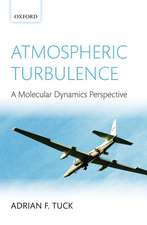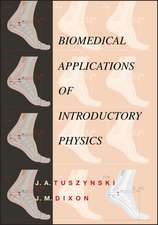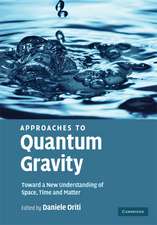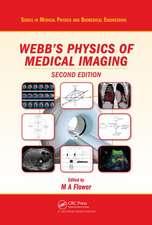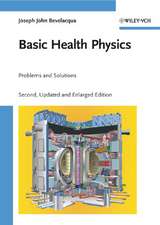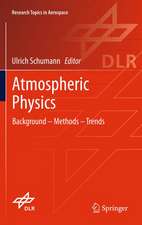Statistical Physics: Student Physics Series
Autor Tony Guenaulten Limba Engleză Paperback – 28 apr 1988
Preț: 379.48 lei
Nou
Puncte Express: 569
Preț estimativ în valută:
72.61€ • 76.02$ • 60.08£
72.61€ • 76.02$ • 60.08£
Carte tipărită la comandă
Livrare economică 05-19 aprilie
Preluare comenzi: 021 569.72.76
Specificații
ISBN-13: 9780415002592
ISBN-10: 0415002591
Pagini: 200
Ilustrații: X, 186 p. 2 illus.
Dimensiuni: 127 x 203 x 11 mm
Greutate: 0.21 kg
Editura: SPRINGER NETHERLANDS
Colecția Springer
Seria Student Physics Series
Locul publicării:Dordrecht, Netherlands
ISBN-10: 0415002591
Pagini: 200
Ilustrații: X, 186 p. 2 illus.
Dimensiuni: 127 x 203 x 11 mm
Greutate: 0.21 kg
Editura: SPRINGER NETHERLANDS
Colecția Springer
Seria Student Physics Series
Locul publicării:Dordrecht, Netherlands
Public țintă
ResearchCuprins
1 Basic ideas.- 1.1 The macrostate.- 1.2 Microstates.- 1.3 The averaging postulate.- 1.4 Distributions.- 1.5 The statistical method in outline.- 1.6 A model example.- 1.7 Statistical entropy and microstates.- 2 Distinguishable particles.- 2.1 The thermal equilibrium distribution.- 2.2 What are ? and ??.- 2.3 A statistical definition of temperature.- 2.4 The Boltzmann distribution and the partition function.- 2.5 Calculation of thermodynamic functions.- 3 Two examples.- 3.1 A spin(math) solid.- 3.2 Localized harmonic oscillators.- 4 Gases: The density of states.- 4.1 Fitting waves into boxes.- 4.2 Other information for statistical physics.- 4.3 An example — helium gas.- 5 Gases: The distributions.- 5.1 Distribution in groups.- 5.2 Identical particles-fermions and bosons.- 5.3 Counting microstates for gases.- 5.4 The three distributions.- 6 Maxwell-Boltzmann gases.- 6.1 The validity of the Maxwell-Boltzmann limit.- 6.2 The Maxwell-Boltzmann distribution of speeds.- 6.3 The connection tothermodynamics.- 7 Diatomic gases.- 7.1 Energy contributions in diatomic gases.- 7.2 Heat capacity of a diatomic gas.- 7.3 The heat capacity of hydrogen.- 8 Fermi-Dirac gases.- 8.1 Properties of an ideal Fermi-Dirac gas.- 8.2 Application to metals.- 8.3 Application to helium-3.- 9 Bose-Einstein Gases.- 9.1 Properties of an ideal Bose-Einstein gas.- 9.2 Application to helium-4.- 9.3 Phoney bosons.- 10 Entropy in other situations.- 10.1 Entropy and disorder.- 10.2 An assembly at fixed temperature.- 10.3 Vacancies in solids.- 11 Phase transitions.- 11.1 Types of phase transition.- 11.2 Ferromagnetism of a spin-½ solid.- 11.3 Real ferromagnetic materials.- 11.4 Order-disorder transformations in alloys.- 12 Two new ideas.- 12.1 Statics or dynamics?.- 12.2 Ensembles-a larger view.- Appendix 1 Some elementary counting problems.- Appendix 2 Some problems with large numbers.- Appendix 3 Some useful integrals.- Appendix 4 Some useful constants.- Appendix 5 Questions.- Appendix 6 Answers to questions.











